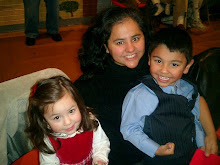All students have much to learn and gain by using technology regularly, especially in today's world, where technology is so prominent. Students at this early age are expected to learn and use age appropriate and challenging technology tools in their classrooms. The expectation by the end of Pre-kindergarten is that all students are able to use basic computer functions and specific age appropriate tools with confidence and independence.
The Pre-kindergarten tools students are expected to use and know are
 *Open, use, and close a variety of software programs
*Open, use, and close a variety of software programs*Be able to use different input devices
*Use technology terminology
*Use voice/sound recorders and touch screens
*Use software with audio, video, and graphics
*Know that information can be accessed by using technology
What is a spiraling and scaffolding curriculum?
Using a spiraling or scaffolding curriculum in the classroom is an excelle
 nt way to ensure students understand and master the concepts being taught. A spiraling curriculum introduces a topic and ideas over and over again. It moves in a circular pattern and is tied to the student level of readiness. For example, when fractions are introduced for the first time, mastery for the concept might not be achieved by all since not everyone in your class is ready to master the concept. a few students master the concept on this first level, then more will master it when the concept comes up again or spirals. The reason that this works is because the concept becomes more familiar and comprehensible to students each time it is introduced.
nt way to ensure students understand and master the concepts being taught. A spiraling curriculum introduces a topic and ideas over and over again. It moves in a circular pattern and is tied to the student level of readiness. For example, when fractions are introduced for the first time, mastery for the concept might not be achieved by all since not everyone in your class is ready to master the concept. a few students master the concept on this first level, then more will master it when the concept comes up again or spirals. The reason that this works is because the concept becomes more familiar and comprehensible to students each time it is introduced. Scaffolding curriculum works in a different way. This is a sequence of content, materials, tasks, tea
 cher and peer support. Scaffolding provides students with the support needed until they are able to independently use the new skill and strategy on their own. Think about scaffolding as if you were constructing a building. You need to have a temporary framework that holds us the building during construction and this framework or scaffold is removed when the building is strong enough to stand on its own.
cher and peer support. Scaffolding provides students with the support needed until they are able to independently use the new skill and strategy on their own. Think about scaffolding as if you were constructing a building. You need to have a temporary framework that holds us the building during construction and this framework or scaffold is removed when the building is strong enough to stand on its own.How do the TEKS create opportunities for student mastery?
The TEKS are built using a scaffolding and spiraling curriculum methods. For example in the Pre-kindergarten TEKS, students are expected to use software applications to create and express ideas. The kinder-2nd grade TEKS spirals and scaffolds off of the Pre-kindergarten ones by re-introducing some of the same concepts and adding new ones. They also use software to create ideas, but they add creating and modifying solutions to problems. The TEKS spiral in 3rd-5th grades, teaching the same thing that was taught in kinder -2nd grade. The 6th-8th grade TEKS scaffolds upon the previous TEKS by adding more student expectations. They need to be able to use the appropriate software, but also be able to plan, create, edit, use interactive virtual environment, and integrate productivity tools and much more. 9th-12th grade TEKS continues to scaffold by adding many more expectations. Some examples: creating libraries, creating and using algorithms, and applying problem solving strategies.
Work Cited:
Curriculum Technology Applications: Student Standards. (2005, March 15). Retrieved November 2009 from the Texas Education Agency Site: http://ritter.tea.state.tx.us/technology/ta/stustd.html

No comments:
Post a Comment